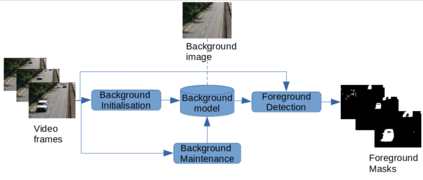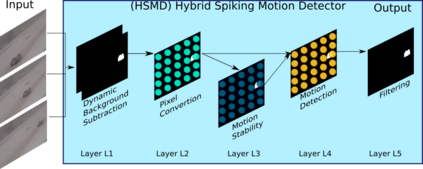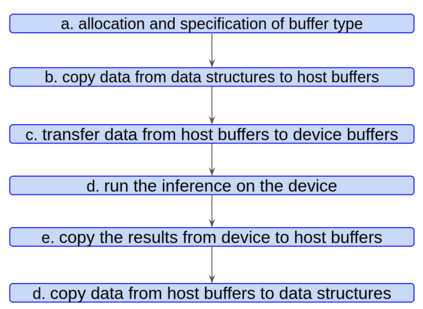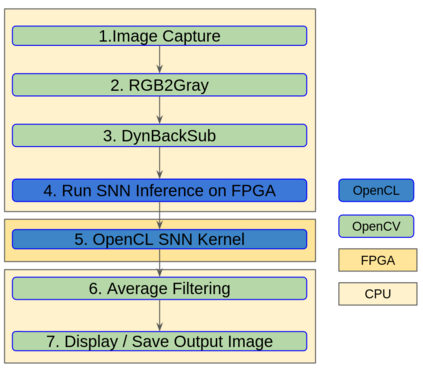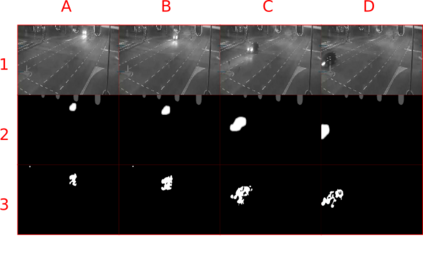Vertebrate retinas are highly-efficient in processing trivial visual tasks such as detecting moving objects, yet a complex challenges for modern computers. In vertebrates, the detection of object motion is performed by specialised retinal cells named Object Motion Sensitive Ganglion Cells (OMS-GC). OMS-GC process continuous visual signals and generate spike patterns that are post-processed by the Visual Cortex. Our previous Hybrid Sensitive Motion Detector (HSMD) algorithm was the first hybrid algorithm to enhance Background subtraction (BS) algorithms with a customised 3-layer Spiking Neural Network (SNN) that generates OMS-GC spiking-like responses. In this work, we present a Neuromorphic Hybrid Sensitive Motion Detector (NeuroHSMD) algorithm that accelerates our HSMD algorithm using Field-Programmable Gate Arrays (FPGAs). The NeuroHSMD was compared against the HSMD algorithm, using the same 2012 Change Detection (CDnet2012) and 2014 Change Detection (CDnet2014) benchmark datasets. When tested against the CDnet2012 and CDnet2014 datasets, NeuroHSMD performs object motion detection at 720x480 at 28.06 Frames Per Second (fps) and 720x480 at 28.71 fps, respectively, with no degradation of quality. Moreover, the NeuroHSMD proposed in this paper was completely implemented in Open Computer Language (OpenCL) and therefore is easily replicated in other devices such as Graphical Processing Units (GPUs) and clusters of Central Processing Units (CPUs).
翻译:Vertebrate 视网膜在处理诸如探测移动物体等无关紧要的视觉任务方面效率很高,但现代计算机却面临复杂挑战。在脊椎动物中,对物体运动的检测是由名为“物体运动敏感凝聚细胞”的专用视网膜细胞(OMS-GC)进行的。OMS-GC进程连续视觉信号并生成由视觉科特克斯(FPGAs)处理后处理的峰值模式。我们以前的混合敏感运动探测器(HSMD)算法是第一个用定制的三层 Spiking神经网络(SNNN)来强化背景减量算法的混合算法,该算法生成了OMS-GC的快速神经网络反应。在这项工作中,我们展示了一个名为“神经运动混合运动”的神经运动感光电感动感应器,因此,NEUHSMDM(CD2012) 和2014年变换码目标检测(CDnet 2014年) 基准数据设置了ODMIS 的直径阵列,因此,在二十八号的内直径CMLMER 和CDMER 的SBSER 进行测试中,因此,在这种直径2020和CD-CRER 。


